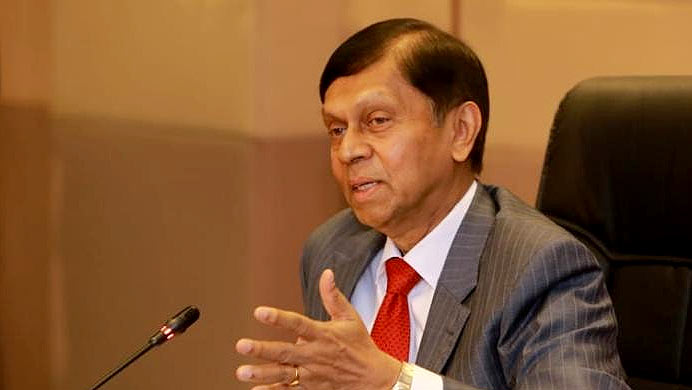Sri Lanka to meet all debt repayments while rebuilding foreign exchange reserves – CBSL Governor

The Sri Lankan government will meet all debt repayments in 2022 and work on a more comprehensive plan to address its dwindling foreign exchange reserves, Central Bank Governor Ajith Nivard Cabraal said on Wednesday.
Sri Lanka managed to boost its reserves to $3.1 billion at the end of December thanks to a yuan currency swap with China worth $1.5 billion. And the government is currently in talks with India and Qatar to obtain multiple credit lines and a currency swap arrangement, totalling around 2.9 billion. read more
Sri Lanka needs to repay about $4.5 billion in debt this year, starting with a $500 million International Sovereign Bond (ISB) maturing on Jan. 18 for which fund allocations have already been made, Cabraal said.
“Not paying debt will push us into bigger challenges,” Cabraal said during an event organised by the department of government information.
“We need a more comprehensive, longer term plan to address debt and other issues in the Sri Lankan economy. Not honouring ISBs will get Sri Lanka into a path of pain.”
Due to the pandemic, Cabraal said the country has lost about $9 billion from tourism revenue in the last two years but he expected a pickup in tourism in the next 2-3 months would help rebuild reserves.
Even before the pandemic struck, tourism had fallen off in Sri Lanka as a result of the Easter Sunday bombings in 2019 that targeted churches and hotels, and killed 267 people.
Cabraal said the negotiations with India were at advanced stages. Sri Lanka is seeking a $1 billion credit line, and a $400 million swap arrangement with India, plus a $500m credit line for fuel involving Indian Oil Corp (IOC.NS), which has operations on the island.
The recent sharp increase in energy import bill, due to surging global prices for oil and gas, have exerted more pressure on Sri Lanka’s reserves.
And discussions with Qatar for a $1 billion credit line are also underway.
Cabraal said the government could also look at a fresh loan from China, which is Sri Lanka’s fourth biggest lender, behind international financial markets, the Asian Development Bank (ADB) and Japan.
Several analysts have said Sri Lanka may eventually need to go to the International Monetary Fund for a bailout – something the government has been reluctant to do.
“Approaching the IMF is not something to be taken lightly. The monetary board has had many discussions on this matter and we only see the IMF as one of many options,” Cabraal said.
“Our view is the path we are on is the most appropriate. The IMF is not a fix-all solution, it’s not a magic wand,” he added.
(Reuters)
Latest Headlines in Sri Lanka
- Sri Lanka to operate immigration department 24/7 to speed up passport issuance February 5, 2025
- Sri Lanka announces new paddy purchase prices from February 6, 2025 February 5, 2025
- Sri Lanka launches national survey on toque macaque February 5, 2025
- Sri Lankan MPs’ meal price jumps over four times from Rs. 450 to Rs. 2,000 February 5, 2025
- Sri Lanka to cut water tariffs by up to 30% February 5, 2025


